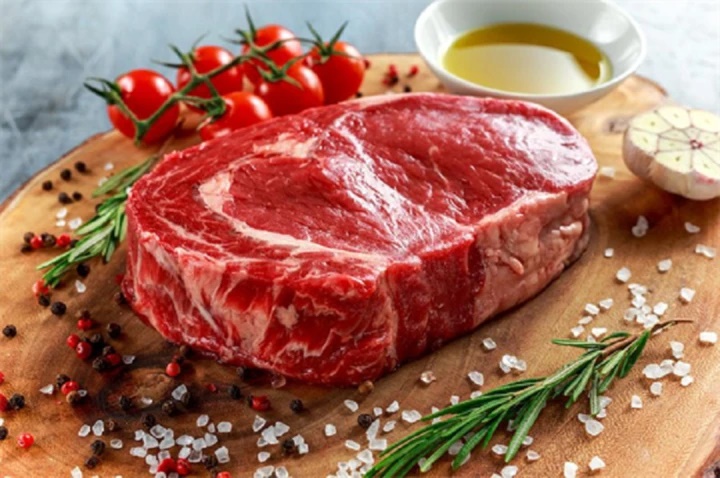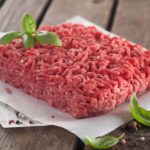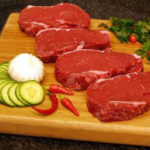Beef is a popular and familiar food in daily meals. Beef is delicious and nutritious. However, not everyone knows how to choose good quality beef.
Here are some points to note when buying beef, which everyone should know:
Avoid buying tough beef
Beef has elasticity and tenderness, so when buying, you can simply press the piece of meat with your hand to feel it. When you press a fresh and good piece of beef and release it, you will see the meat quickly return to its normal state. On the contrary, if the beef is not elastic, when pressed, it will form a dent and will not return to its original state or return slowly. This means that the meat has been stored for too long, and the moisture and nutrients have been lost or it is about to spoil. Therefore, avoid buying soft meat without elasticity.
Avoid buying beef with strange colors
Good beef is pink or deep red in color, has a distinct beef smell, and feels slightly tender and moist when touched. Even after processing, the meat should still retain its dark pink color, sweet taste, and a distinctive smell. The beef should have small and long striated meat fibers, and the fat should be light yellow.
On the other hand, pieces of meat that are dark brown are spoiled, or if they have an abnormally bright red color that turns into a pale color, and when touched, the color sticks to your fingers, then the meat has been stored for a long time and has been contaminated with beef secretions.

Avoid buying the following types of beef
Avoid buying pre-ground beef
Many meat counters in markets, stores, or supermarkets usually mix beef with pork or leftover meat parts, which are not tasty and very difficult for customers to identify with the naked eye. Therefore, when buying, you should choose whole pieces of beef, then wash them at home, use paper towels to dry them, and then use a sharp knife to chop them finely to ensure the quality of the meat.
Avoid buying beef with odor, water leakage, or stickiness
Contrary to the distinct smell of fresh beef, if beef has a foul smell, a rancid smell, and even has a yellow water leakage or stickiness, it means that the meat has been stored for too long and is about to spoil. Therefore, you should absolutely avoid buying this type of meat in order to avoid causing serious health problems.
How much beef should you eat in a week?
According to the recommendations of scientists, the amount of beef you should eat per week is from 300 – 500g. If you eat about 100g per day, you are at risk of developing diseases such as diabetes, Alzheimer’s… Instead of eating a lot of red meat like beef, people should eat more fish and poultry.
Note that each food has its own medicinal properties, and there are some foods that should not be cooked or eaten together because they can harm your health or not be prepared properly. With beef, you can cook many tasty and nutritious dishes, but housewives need to pay attention to avoid improper combinations:
Do not eat beef with seafood, as the nutrients may react and create salt deposits that hinder the absorption of phosphorus, calcium.
Do not eat beef with eel and leek, as it is difficult to digest and can be toxic.
Do not eat beef with hazelnuts, as the protein in the meat will be denatured by the vitamin C in hazelnuts.
Do not eat black beans immediately after eating beef, as the body has difficulty absorbing the iron in beef.
Do not eat beef with soybeans at the same time, as it produces a lot of uric acid – causing gout and joint pain. People with high blood fat, high blood pressure, arthritis, and kidney beans should not eat beef because it contains a high amount of protein and can cause many harmful effects.
Do not drink tea immediately after eating beef, at least 2 hours should be allowed to avoid stimulating the intestinal mucosa, reducing intestinal peristalsis, and causing constipation.
Do not drink alcohol with beef, as it can cause constipation, inflammation of the gums, red eyes, and ringing in the ears.
According to VTC.vn






































